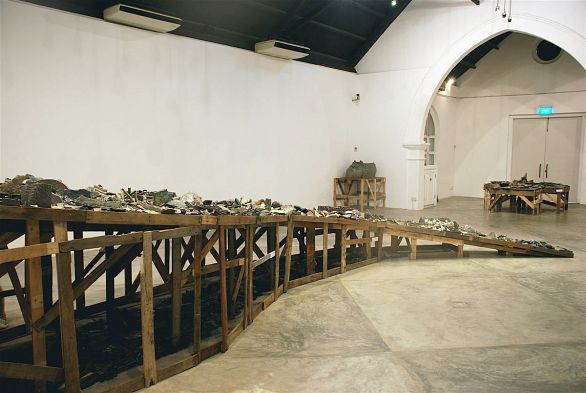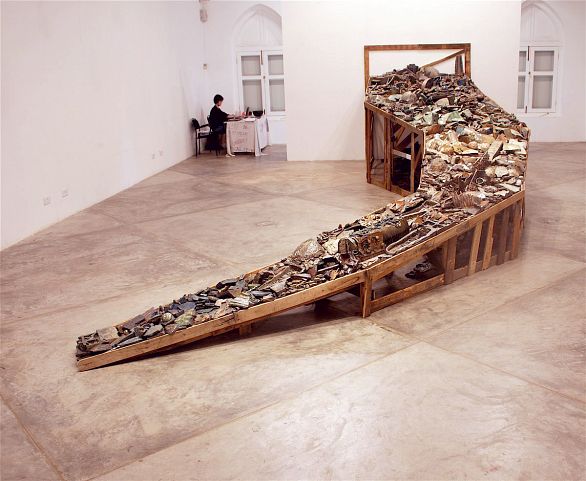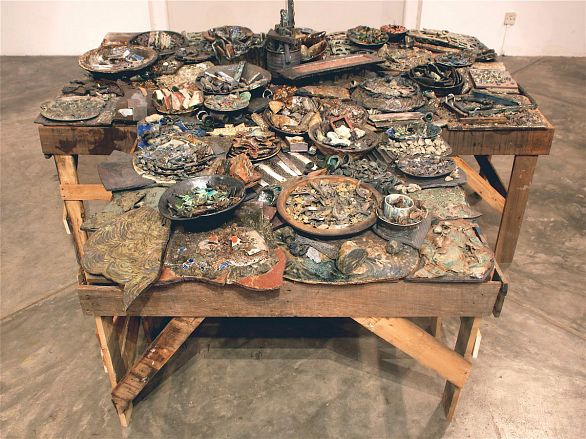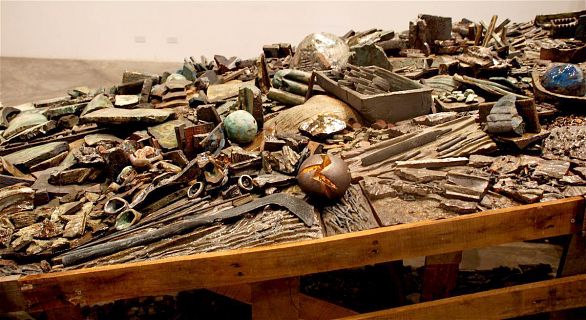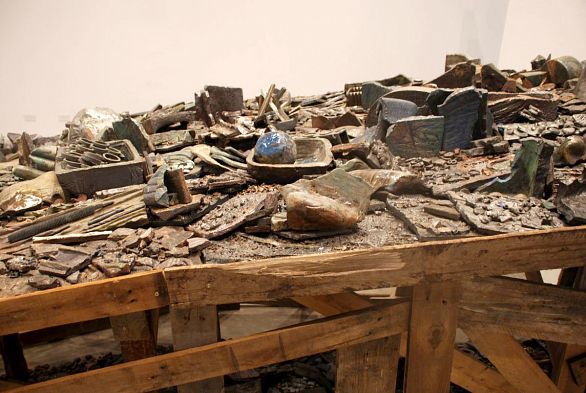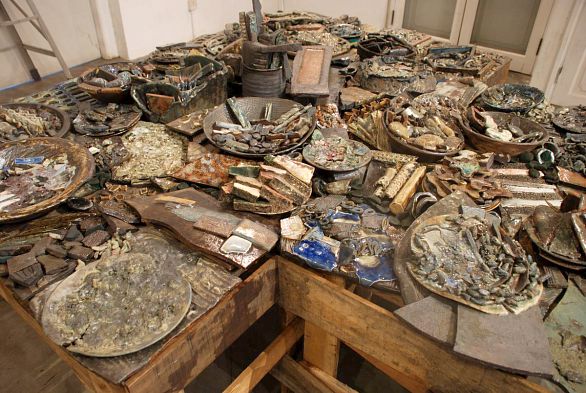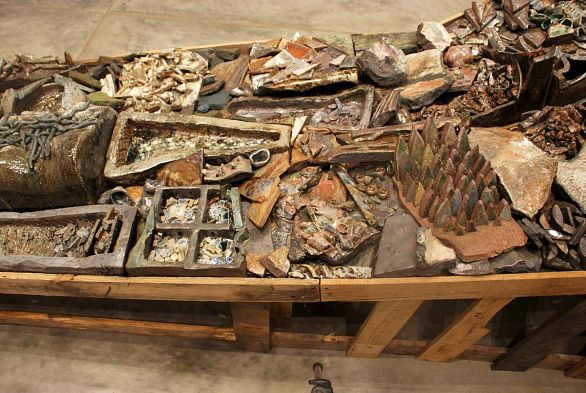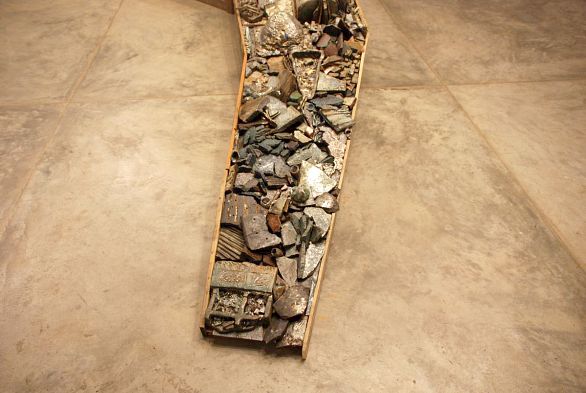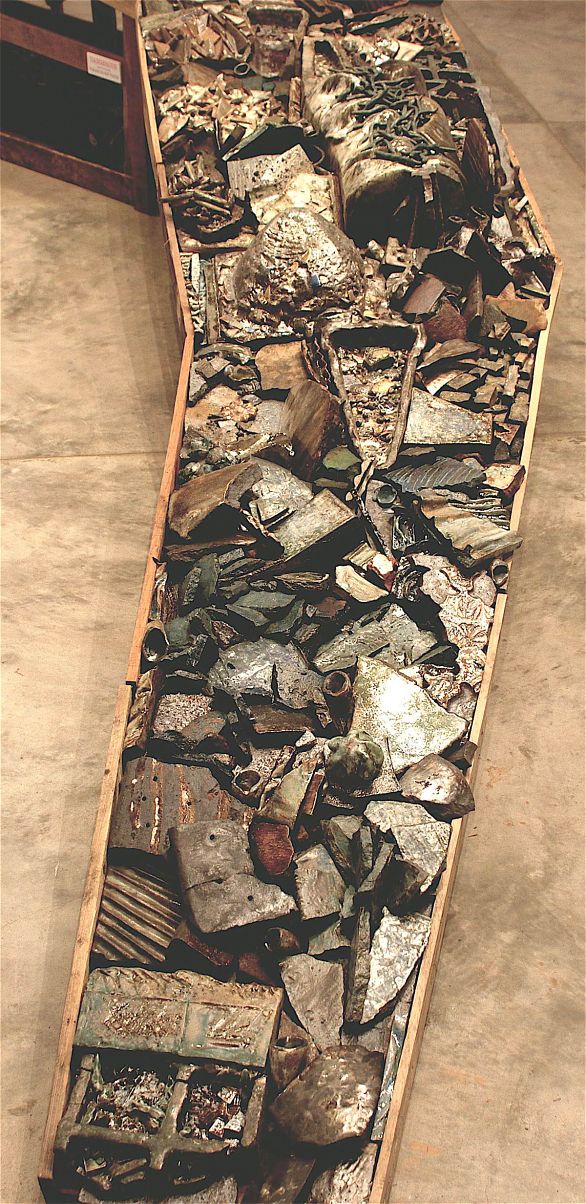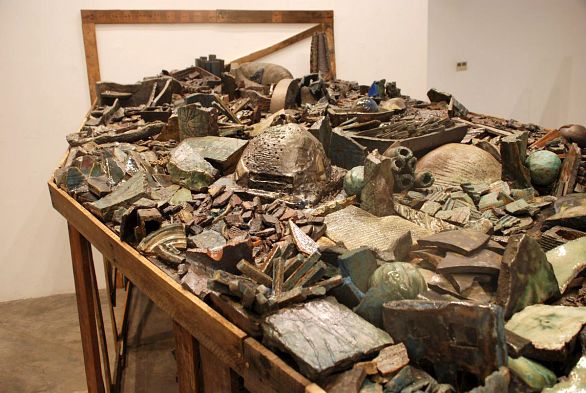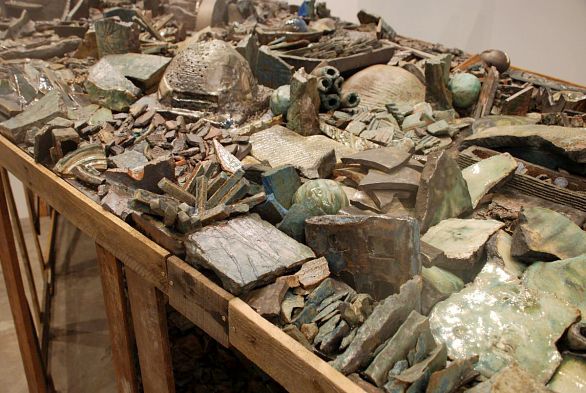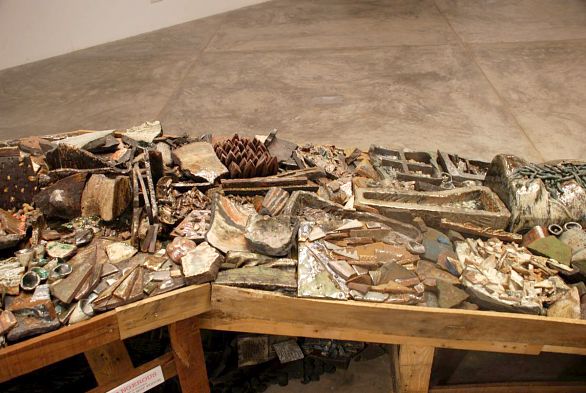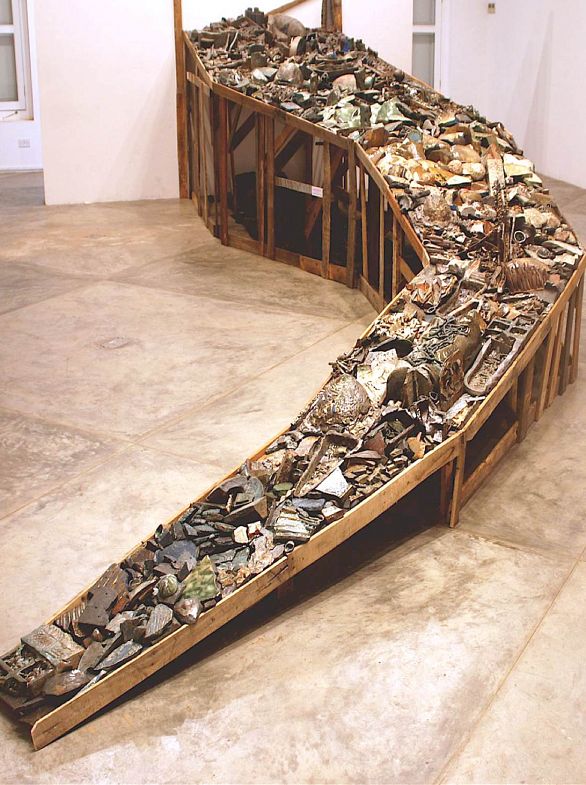Mine 2011, Sculpture Square, Singapore
Eleven years separate Delia Prvacki’s ceramic installations at Singapore’s Sculpture Square. In 2000 her exhibition Celebration created a site-responsive environment with 2,000 blades of ceramic grass and stars. This exhibition, Mine, uses roughly the same footprint, again returning to a conceptual foundation to liberate the ceramic medium from its traditional function.
Walking into the space we unmistakably read this installation in a sculptural context. Its volume has great weight, density and presence. A timber chute arcs its way through the gallery, starting at eye level and flowing to the floor, its structure constructed from recycled wood. It is extremely architectural in its spatial dialogue, and yet its static frame is offset by an inherent energy in the kaleidoscope of shards and forms that graduate in a torrent from black, to green, to ochre and blue. It cradles the material like a 3-dimensional collage.
One is slowly overwhelmed by its mass; hundreds of elements each treated individually and meticulously classified. It is not coincidental this exhibition closes the year of the ‘metal tiger’ in Chinese astrology. Mine speaks of transitions both physical and metaphorical: raw ore into an equitable product; primordial metals used in the most advanced technology and medical science; the base element of glazes from rock to liquid beauty; Delia’s own journey from a mining town in Transylvania to Singapore, and indeed, our perception of ceramics as a medium is also transformed. It is alchemy at its best.
In many ways this exhibition surveys 40-years of Delia’s ceramic practice and is extremely technically complex. Her knowledge of glazes and their calculated effect allow for greater spontaneity to enter the work. On closer inspection one can even find metal objects such as screws, drill bits and a file that have been fired into the clay, adding another textural element. It is this spirit of discovery that is at the heart of mining speculation, and sets Delia Prvacki apart from other ceramists.
This desire for experimentation is further explored in a smaller installation with the same timber-frame presentation cohesively tying the show. It alludes to precious metals and ‘the search for exquisite beauty and preciousness’ – simply the panning for gold, trawling curiosity shops, to the more complex concept of what makes a ‘good’ ceramic? The discovery of 17 new metals in recent years has led to new glazes, rare pinks and purples that Delia adds to her palette with a painter’s ease.
Here she plays with various techniques, making composite sculptures from ready-mades - industrial objects such as a Chinese commercial bowl or teapot that are fired at a very high temperature so they melt and fuse with the sculpted object. It is almost an archaeology of irreverence, as she constantly pushes forward to a sculptural medium. The two installations hold together conceptually well.
A third piece is added to the exhibition, perhaps unnecessarily, one that is spawn from a nostalgic position and memories of growing up in a mining region in Romania. Three pot-like urns with a copper glaze sit on a timber base referencing a sealed mine. To the viewer the leap is a little obscure and rather returns the ceramic medium to its more crafty perceptions. It is, however, a small distraction to the presence of this exhibition that should be celebrated for its maturity, its originality and its technical complexity.
While it is far from political in its tone, there is an undercurrent to Mine that questions our conflicted relationship to nature and disrespect for its growing fragility, witnessed in the mining tragedies in Chilli and China in this metal tiger year. To be able to communicate such complexities through a media like ceramics, clearly releases it to a renewed understanding as a contemporary medium. And just when we thought ceramics as a gallery-sized installation was revelatory enough, this boundary-riding spirit was pushed further by the artist collaborating with a choreographer to respond to, and perform, within the exhibition. It underlines Delia Prvacki’s leadership in her medium, regionally and internationally.
Gina Fairley

